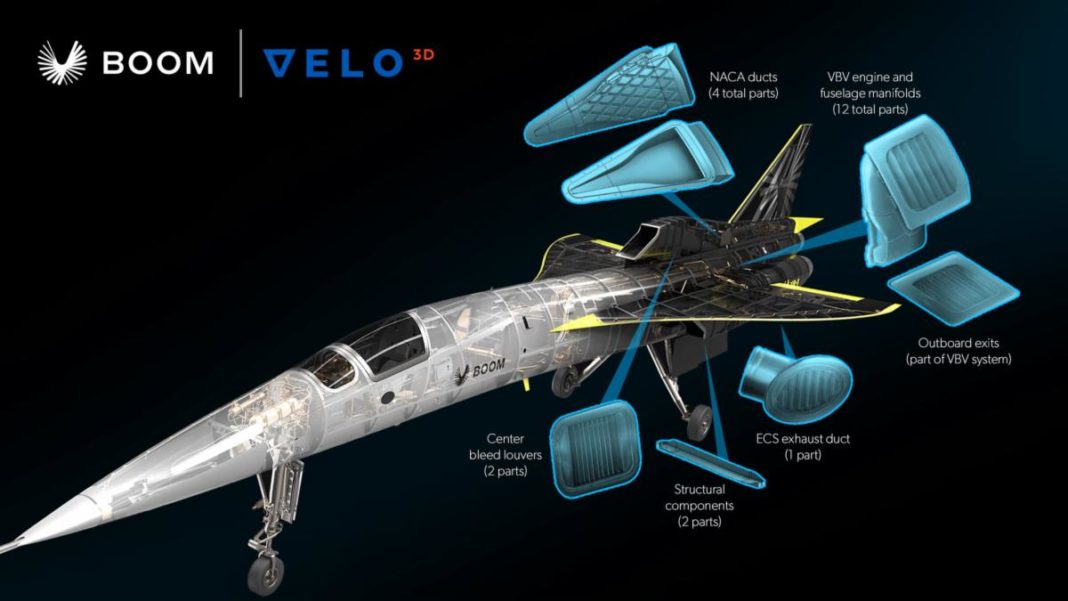XB-1 is ready to fly – with 21 Titanium 3D-printed parts
Following a series of qualification trials on VELO3D’s Sapphire system, the partnership between Boom Supersonic and VELO3D finally bears fruits.
The metal 3D printing specialist has announced that 21 flight hardware components have been manufactured for Boom Supersonic’s XB-1 aircraft using its Sapphire 3D metal printer.
When they announced their partnership, the aerospace specialist said that its supersonic demonstrator device integrates a variable-geometry propulsion system and over 3,700 parts produced by advanced technologies including advanced carbon fiber composites.
As part of this partnership with VELO3D, the parts are printed in Titanium. They will serve for engine hardware, the environmental control system, and structural components. According to VELO3D, characteristics of the geometric designs include tall, thin walls with high aspect ratios, which are inherently difficult to manufacture with either traditional processes such as welding and casting, or even most existing 3D printing technologies.
The key in this production is the manufacturer’s SupportFree printing process which allows for design freedom and quality control while removing manufacturing constraints.
“Aviation hardware is especially difficult to manufacture with 3D metal printing, due to challenging aerodynamic designs that must be balanced with superior durability and high temperature requirements,” said Benny Buller, CEO and Founder of VELO3D. “VELO3D’s technology allows the production of lightweight, complex designs for mission-critical applications in the toughest operating conditions. Our partnership with Boom is truly an advancement for the metal AM industry, and XB-1 supersonic aircraft is a game-changer for the aviation industry.”
XB-1 is a proof of concept that enables to envision what’s possible to achieve when we combine unique advanced engineering technologies such as advanced carbon-fiber composite construction, computer-optimized high-efficiency aerodynamics, and an efficient supersonic propulsion system.. Boom Supersonic aims to prove out the capabilities of these technologies for Overture, its commercial airliner.
XB-1 is the end-product of years of development effort, including multiple wind tunnel trials, dozens of structural tests, hundreds of simulation iterations, and tens of thousands of work hours.
Remember, you can post free of charge job opportunities in the AM Industry on 3D ADEPT Media or look for a job via our job board. Make sure to follow us on our social networks and subscribe to our weekly newsletter : Facebook, Twitter, LinkedIn & Instagram ! If you want to be featured in the next issue of our digital magazine or if you hear a story that needs to be heard, make sure to send it to contact@3dadept.com






